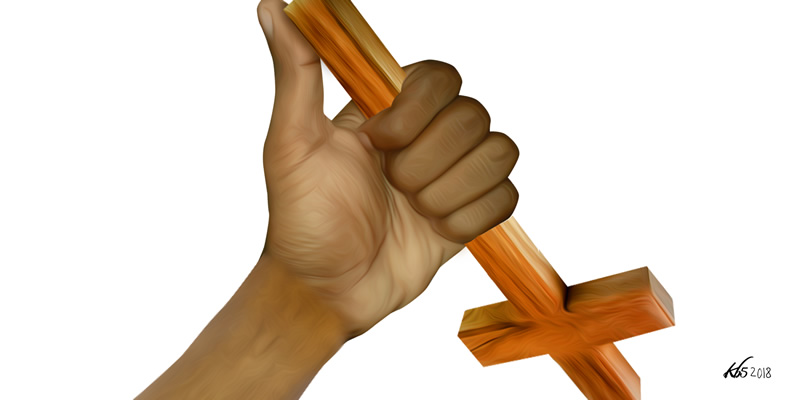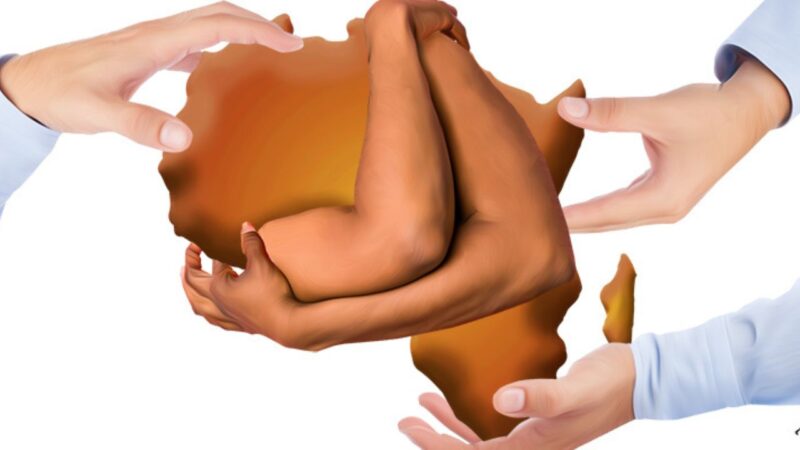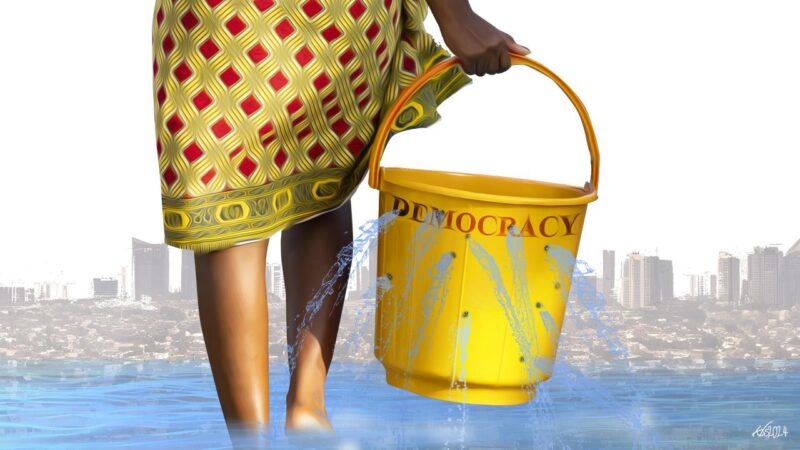A few weeks ago, Kenya’s Deputy President, William Ruto, told off those criticising his frequent church harambees by stating that he was “investing in heaven”. “Wengine wananikashifu eti huyu anazunguka kwenye makanisa, eti ninatoa pesa pale na pale, sijui nini… Shauri yao. Mimi nina invest kwa mambo ya mbinguni. Wewe ukitaka kuinvest mahali pengine… si kila mtu ako na uhuru wa kuinvest pahali anataka?”
(“Some people condemn me for going around churches, for donating money here and there. It’s their problem. I’m investing in heavenly matters. If you want to invest elsewhere, it’s your right to do so.”)
A couple of weeks later, Ruto reiterated this message, saying that at least he was investing in heaven – there were others investing in witchcraft.
The Deputy President has carefully crafted an image of a clean-cut, staunch Christian. He is said to be a teetotaller, waking up at 4am daily to pray, and never misses a Sunday service, “despite his busy schedule”. His student days as leader of his university’s Christian Union are frequently invoked as a sign of his commitment to the faith. And, of course, there are the large cash donations (harambees) to many churches.
Ruto’s other public persona is that of a “hustler”. In interviews, he has spoken of his “ordinary” peasant upbringing of herding cows and selling chicken during the weekends and holidays to raise money for family needs.
But in recent years, stubborn questions regarding the source of his vast wealth refuse to go away. Media reports have revealed that Ruto’s known investments include a new residence in Uasin Gishu estimated to be worth Sh1.2 billion, Weston Hotel in Nairobi estimated to be worth Sh2.5 billion, hotels in Mombasa and the Mara worth Sh3 billion, stakes in Amaco Insurance, rental properties in Nairobi and Eldoret, and four helicopters.
The connection between Ruto the public Christian and Ruto the rich/ generous/ corrupt(?) man, is not incidental. If you follow the histories and logics of the Christian project in Kenya – and how it links power and piety – you will arrive at a place where eternal glory is a commercial property, convertible to cash, and tradable like shares in the stock market. You might even arrive at a strange place where brazen pillaging is justified as an actual act of faith.
***
I was 16 when Daniel arap Moi’s KANU party was voted out of office, ushering in a more democratic space for Kenyans. For us watoto wa Nyayo, who had never known any president other than Moi, and who sometimes used Moi as a synonym for the actual noun “president” (like speaking of Uganda: “Museveni is the Moi of Uganda”) it felt euphoric, but also apocalyptic – like we were living out the last days.
The connection between Ruto the public Christian and Ruto the rich/ generous/ corrupt(?) man, is not incidental. If you follow the histories and logics of the Christian project in Kenya – and how it links power and piety – you will arrive at a place where eternal glory is a commercial property, convertible to cash, and tradable like shares in the stock market. You might even arrive at a strange place where brazen pillaging is justified as an actual act of faith.
But I was shaken by the reaction of one of our Christian Union patrons in high school. He was my history teacher, not really that much older than me. He was from Nairobi and made being “saved” look very cool – a popular and well-liked teacher. So I was taken aback when he was visibly devastated by KANU’s loss and spoke in cryptic lamentations about Mwai Kibaki’s NARC government being a very bad mistake for Kenya, a mistake that we would all regret it. He once muttered, quite seriously, that all the words in the dictionary that begin with “narc” have negative connotations – narcotic, narcissist, narcolepsy… This was at a time when young people like us, indeed the whole nation, were all singing the NARC anthem “Unbwogable”.
I watched him maintain a firm allegiance to KANU and Moi all through Kibaki’s two terms of a mixed record – an economic boom marred by corruption and exclusionary politics that erupted into the post-election violence of 2007-8.
But surely KANU/Moi couldn’t have been any better, I would argue with my erstwhile mentor in those years. Moi presided over the brazen pillaging of state institutions that left the economy on its knees and Kenyan families visibly desperate, I would say. He persecuted and locked up dissidents. Moi had torture chambers!
In 2013, KANU 2.0 was back in the form of Uhuru Kenyatta and his deputy William Ruto. I would run into my former teacher less frequently now, but his commitment to chama cha baba na mama was unshaken, and he celebrated Uhuru’s win in 2013. He still wore Moi’s portrait as a lapel pin – that portrait that used to appear on our currency notes and froze Baba Moi’s face as an improbably young(ish) man.
My former teacher said that Kenya had “wasted ten years” by rejecting Uhuru in 2002. I pushed him to explain. I really wanted to understand this. The reason for his unwavering loyalty, he said, was that Moi was the president of the “ordinary Kenyan.”
“Moi travelled all around this country. People saw him, and spoke to him, not like Kenyatta 1 who was always holed up in one of the State Houses or at his home in Gatundu,” he said to me. “Moi was an ordinary Kenyan.”
That reason has always felt deflating and inadequate. That’s it? I would think. You’re okay with Goldenberg, Nyayo House torture chambers, the collapse of dozens of parastatals, the decimation of our universities, public decay and dilapidation because Moi was a mwananchi?
I’ve spent years turning it over and over again in my mind. What does it mean to be an Ordinary Kenyan? Who among us is not an Ordinary Kenyan? How does one acquire, and maintain, Ordinary Kenyanness? And once you are an Ordinary Kenyan, what does that get you? And what can you get away with?
***
In one sense, Ruto’s “hustler” identity is appealing to this Ordinary Kenyanness. He is the “son of a peasant”, it is said, never mind that all of Kenya’s former presidents (Jomo Kenyatta, Moi and Kibaki) were also sons of peasants. By grasping onto that symbolic mwananchi status, Ruto is tapping into the tenuousness of our national identity, and appearing to give it substance, even to personify it. He is giving form to our unspoken assumptions of who can be a Kenyan.
I’ve spent years turning it over and over again in my mind. What does it mean to be an Ordinary Kenyan? Who among us is not an Ordinary Kenyan? How does one acquire, and maintain, Ordinary Kenyanness? And once you are an Ordinary Kenyan, what does that get you? And what can you get away with?
This is not a trivial question. An intriguing study by Michael Bratton and Mwangi S. Kimenyi wanted to find out the relationship between voters’ ethnic identity, national identity and voting behaviour. Their survey’s initial findings were that 80% of Kenyans do not prioritise their ethnic identity when describing themselves; indeed nearly four in ten (37%) insisted having no other distinction other than being “Kenyans”. We see this all the time in common political discourse, especially around election time, in the campaigns that insist My Tribe Is Kenyan/ I Don’t See Tribe.
However, in line with the cognitive dissonance between people’s self-perception and actual voting behaviour, those calling themselves “Kenyans” are just as likely to be motivated by ethnic origins over policy issues. In other words, the so-called “Kenyans” still refer to their ethnic origins when deciding how to vote – just as much as those who are more upfront about admitting their allegiances to kinship ties.
Most intriguing of all is that among those who say Their Tribe Is Kenyan, actual ethnic origins propel voting behaviour most for those of the Kikuyu-Embu-Meru groups and for the Kamba.
In contrast, those Luo who regard themselves as “Kenyans” make no reference to their ethnic origins when making voting decisions. The scholars then asked: “Does this mean that the Kikuyu and related tribes equate their own ethnicity with national identity? Are they hinting that they see themselves as the only true Kenyans?” (emphasis mine).
I suspect that they do. We often wonder how many of those who fought for democracy in the 1990s did a full about turn and became the shameless Anglo Leasing thieves during the Kibaki years. What changed? I hazard that nothing did – they just regarded power (i.e. the Kenyan state) as rightfully belonging to them. That’s what they were fighting for – not real inclusion. Not democracy. Certainly not justice.
Wandia Njoya has written powerfully about how capitalism as a system is exclusionary and narrow-minded, and so must perpetuate itself through a single bloodline. “Its logic is mono-ethnic. It knows one colour of money: white.”
And so, in every African country, that predatory colonial system appointed a particular ethnic group as an honorary white community, and supported that ethnic group, no matter what. “In Kenya, the appointed bloodline is Kikuyu,” Njoya argues.
This is where Ruto’s – and earlier, Moi’s – postures as Ordinary Kenyans have their power. They are subverting this assumption, that Kikuyu-and-related interests are the same as Kenyan interests. They are reclaiming, even weaponising, Ordinary Kenyanness.
And so, in every African country, that predatory colonial system appointed a particular ethnic group as an honorary white community, and supported that ethnic group, no matter what. “In Kenya, the appointed bloodline is Kikuyu,” Njoya argues.
And this is also where the redistributive logic of Moi, and now Ruto, comes in. Moi’s policies took economic support away from coffee – principally grown in Central Kenya, the Kikuyu homeland – and into maize and milk in the traditionally less-privileged Rift Valley regions (home of the Kalenjin), thereby lifting up an alternative economic elite.
The only problem for Moi was that by the late 1980s one could no longer redistribute the “fruits” of independence – Jomo Kenyatta’s generation had already gotten the mzungu businesses through “Africanisation” programmes, the thousands of jobs vacated by colonial officials, land and other goodies.
And by the late 1980s, the mismanagement and mediocrity in public institutions meant that there was less fat to skim off – now one had to kill the whole animal. In the words of economist David Ndii, the Moi years were a “corrupt mediocracy”: Because Moi and his cronies were unable to generate sufficient returns, they ate into the capital.
Whereas in the Jomo Kenyatta era money was to be made by skimming off the profits of companies, now there was open asset stripping of state institutions. “That’s what the decay of our infrastructure during Moi was — they ate the capital.”
***
But there’s more. This subversion and reclaiming of ordinary Kenyanness is also a theological project in the Kenyan context. Moi redistributed political power, access to the presidency, and economic benefit, along the same lines that he supported Pentecostal and evangelistic ministries all over Kenya. Evangelical/ Pentecostal movements have within them a particularly democratic posture – at least theoretically – that has frequently made them clash with establishment powers. In the context of Empire, piety has always been a way of resistance in oppressive settings or in places where the power dynamic is unequal.
Take for example the African Inland Mission (AIM), which we know today as the African Inland Church (AIC), the denomination that Moi faithfully belonged to. In the early colonial years, AIM’s emphasis was on accepting recruits who demonstrated their commitment to Christianity and personal uprightness rather than those who had special training. This meant that the majority of those who showed an interest in the Mission and its activities were from the bottom rungs of society. They did not have property or power – they were described in Gikuyu as ahoi (landless tenants) and because of this, they did not have any prospects for leadership as heads of clans (mbari) or age groups (riika).
The AIM in Kijabe provided such people with an alternative route to power and status by the subtle deployment of piety as status. In order to be a leader in this context, one needed to demonstrate personal holiness, unlike the mainstream churches that put the emphasis on formal theological training.
This wasn’t confined to the AIM, but would come up again and again in East Africa during the colonial era, where various revival movements seemed to just be spiritual outpourings, but actually did the work of upsetting political authority and reclaiming some power for those on the fringes of society.
The AIM in Kijabe provided such people with an alternative route to power and status by the subtle deployment of piety as status. In order to be a leader in this context, one needed to demonstrate personal holiness, unlike the mainstream churches that put the emphasis on formal theological training.
In the late 1920s, for example, a revival movement began in Gahini in Rwanda, near the present-day border with Uganda. A young African Christian, Simeoni Nsibambi, did a deep reading of the Bible with the British doctor and missionary, Joe Church. Together they traced the chain references to the Holy Spirit in the Bible. “The result for both men was a spiritual transformation,” writes researcher Brian Stanley. The meetings at Gahini would “break through” after a public confession of sins – congregants would experience visions, falling down in trances, weeping, shaking, and other phenomena of near hysteria. Hymn singing sessions went on all night. This outpouring of the Spirit quickly spread to Rwanda, Burundi, eastern Congo, Kenya and South Sudan.
The revival led to a split in congregations in the region, between the abaka – those “on fire” – and those who were not. Missionary Geoffrey Holmes, writing from Gahini in April 1939, lamented the division of the station into two camps: “There is no real fellowship between those who are in this group [abaka] and those who are not. Those who are in it are continually seeking to convert those who are not to their way of thinking, and every means of persuasion and moral coercion are employed.”
But the revival also did something else; it made possible an equal fellowship between missionaries and Africans on level ground, a new working relationship that made some Europeans uncomfortable. They were surprised to find that even though they had brought the gospel to the “Dark Continent”, they did not have exclusive access to it – it could be wrestled away from them by the power of the Holy Spirit’s baptism on the altar of an ordinary kesha.
As Simeoni Nsibambi once told Joe Church “with disarming simplicity”, “Do you know, Dr Joe, I can tell after I have shaken hands with a new missionary whether he has got the real thing in his heart or not.”
For the missionaries it was a humbling experience, and not all succeeded in coming to terms with it. In Church’s words: “We were beginning to see that we had come as missionaries to bring the light, but every now and again that light was turned round to shine on us.”
In this light, we can read the various revival movements – which I encountered in my teenage years as a Pentecostal during Holy-Spirit-baptism type moments, as I describe in Part I of this series – as a kind of redistribution. These movements broke down the barriers between the stuffy church institutions and the people of God by making the very presence of God available to all who would believe – even more than the classic Reformation notion of making the Scriptures accessible to all.
In that way, they were democratic, in a sense. Anyone who was “on fire”, who demonstrated a personal holiness, could speak with real authority. God could use anyone.
But when these two strands – Ordinary Kenyanness as economic redistribution and Powerful Christianness as ordinary personal piety – are knitted together, we arrive, rather darkly, at Ruto the devout, teetotaling Christian mired in corruption scandals. One even suspects that it is not coincidental that Kamlesh Pattni, the mastermind of Kenya’s biggest redistribution exercise in the form of mega graft, was reborn as Brother Paul.
***
Life is theology. The way we conceive of a higher power, or even the absence of one, determines what we think about ourselves, about each other and about the world around us. The influence goes the other way too – humans create cosmologies and end-of-the-world narratives based on their material conditions.
But when these two strands – Ordinary Kenyanness as economic redistribution and Powerful Christianness as ordinary personal piety – are knitted together, we arrive, rather darkly, at Ruto the devout, teetotaling Christian mired in corruption scandals.
So what does Ruto’s predatory, redistributive gangster theology tell him, and us? That hustlers can make it too, that the presence of God is not exclusive to a select few, that the pious son of a peasant deserves access to the Holy of Holies.
The problem is when that democratisation of the Spirit is now extended to the institutions of the state – where brazen pillaging becomes an actual twisted act of faith.
There is a third, more excellent way. We need a Kenyan liberation theology that breaks us free from the grip of extractive colonial ideologies perpetuated by our petty plantation masters today and that also breaks us free from the false visions of a redistributive gangster theology.
Jesus of Nazareth preached the good news to the poor, recovered sight to the blind and freed captives. That’s what Jesus’s life, teachings and death were about – God’s protest against the exploitation of the weak by the strong.








